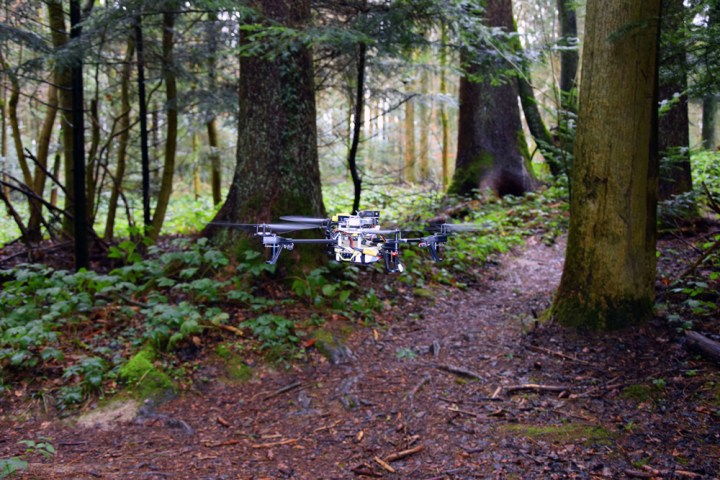
Though the drone itself may get the bulk of the spotlight, it’s the artificial intelligence software developed by the partnership that deserves much of the credit. Run via a combination of AI algorithms, the software continuously scans its surroundings by way of two smartphone-like cameras built-in to the drone’s exterior. As the craft autonomously navigates a forested area, it consistently detects trails before piloting itself down open paths. However, the term “AI algorithms” is an incredibly easy way of describing something wildly complex. Before diving into the research, the team knew it would have to develop a supremely talented computing brain.
“While drones flying at high altitudes are already being used commercially, drones cannot yet fly autonomously in complex environments, such as dense forests,” says University of Zurich professor Davide Scaramuzza. “In these environments, any little error may result in a crash, and robots need a powerful brain in order to make sense of the complex world around them.”
Armed with this understanding, the group devised its software using an algorithm that learns how to solve complex tasks by utilizing a form of training, similar to the way a human brain operates. Called Deep Neural Networks, the team had to physically hike trails in the Swiss Alps while capturing tens of thousands of images to procure enough data to essentially teach its software. After spending many hours hiking and taking photographs, the team uploaded its data to the software and tested its newly trained brain on a fresh trail. While flying, the drone correctly found its direction an astounding 85 percent of the time compared to an 82 percent success rate in humans tested on the same trail.
“Our lab has been working on deep learning in neural networks since the early 1990s. Today I am happy to find our lab’s methods not only in numerous real-world applications such as speech recognition on smartphones, but also in lightweight robots such as drones,” says the Dalle Molle’s scientific director, professor Juergen Schmidhuber. “Robotics will see an explosion of applications of deep neural networks in coming years.”
The team behind the innovative tech did also point out that additional work is required before anyone has the ability to unleash an entire fleet of lost hiker-finding drones, but the advancements in the space are no doubt revolutionary. Dalle Molle’s director in Lugano, Professor Luca Maria acknowledges a drone’s incredible versatility and blistering advancement as an indicator that it won’t soon be long before these aircraft work alongside human workers in times of crisis.
Its immediate goal, however? Teaching the drone software to recognize humans. Starting to sound a whole hell of a lot like Minority Report, wouldn’t you say?




